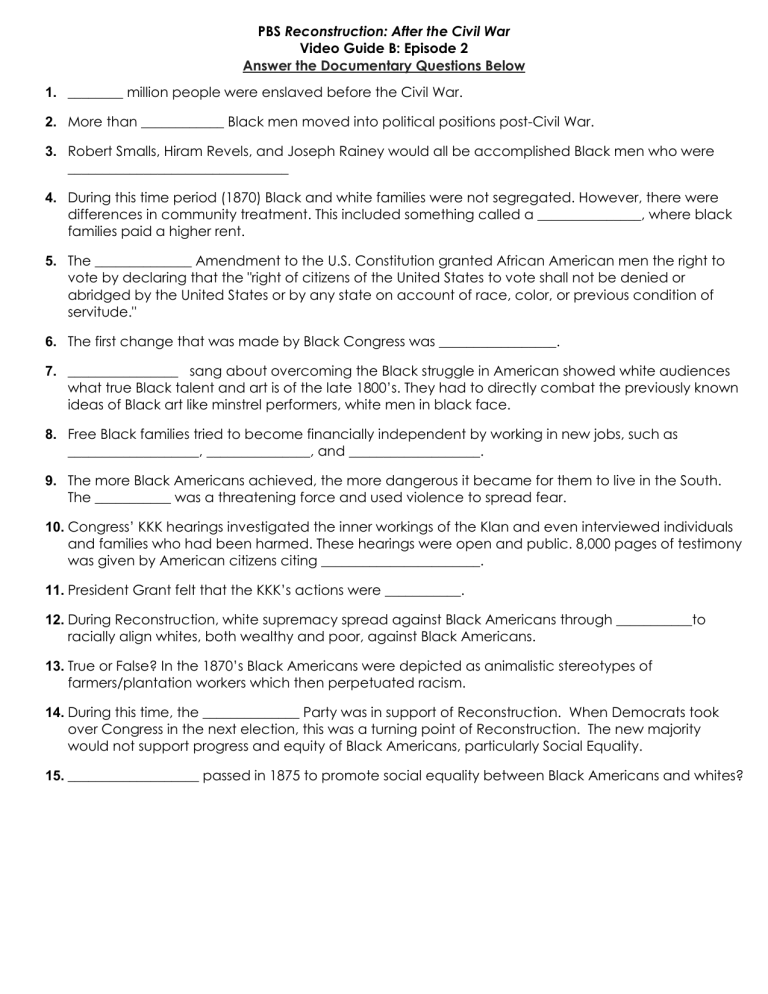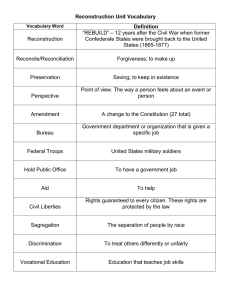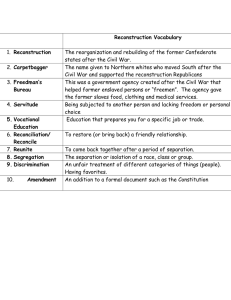
PBS Reconstruction: After the Civil War Video Guide B: Episode 2 Answer the Documentary Questions Below 1. ________ million people were enslaved before the Civil War. 2. More than ____________ Black men moved into political positions post-Civil War. 3. Robert Smalls, Hiram Revels, and Joseph Rainey would all be accomplished Black men who were ________________________________ 4. During this time period (1870) Black and white families were not segregated. However, there were differences in community treatment. This included something called a _______________, where black families paid a higher rent. 5. The ______________ Amendment to the U.S. Constitution granted African American men the right to vote by declaring that the "right of citizens of the United States to vote shall not be denied or abridged by the United States or by any state on account of race, color, or previous condition of servitude." 6. The first change that was made by Black Congress was _________________. 7. ________________ sang about overcoming the Black struggle in American showed white audiences what true Black talent and art is of the late 1800’s. They had to directly combat the previously known ideas of Black art like minstrel performers, white men in black face. 8. Free Black families tried to become financially independent by working in new jobs, such as ___________________, _______________, and ___________________. 9. The more Black Americans achieved, the more dangerous it became for them to live in the South. The ___________ was a threatening force and used violence to spread fear. 10. Congress’ KKK hearings investigated the inner workings of the Klan and even interviewed individuals and families who had been harmed. These hearings were open and public. 8,000 pages of testimony was given by American citizens citing _______________________. 11. President Grant felt that the KKK’s actions were ___________. 12. During Reconstruction, white supremacy spread against Black Americans through ___________to racially align whites, both wealthy and poor, against Black Americans. 13. True or False? In the 1870’s Black Americans were depicted as animalistic stereotypes of farmers/plantation workers which then perpetuated racism. 14. During this time, the ______________ Party was in support of Reconstruction. When Democrats took over Congress in the next election, this was a turning point of Reconstruction. The new majority would not support progress and equity of Black Americans, particularly Social Equality. 15. ___________________ passed in 1875 to promote social equality between Black Americans and whites?





